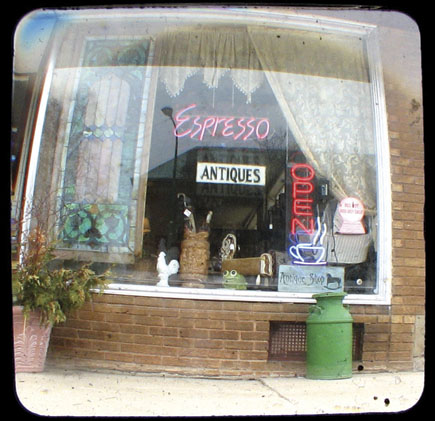TtV Photography; The Duaflex Lives Again
Hopefully you haven’t thrown out your old TLR. I don’t mean your Yashica-Mat, or your Minolta Autocord, or even your Mamiya C330. I’m talking about grandma’s (or your mom’s, depending on how old you are) Kodak Duaflex. Maybe it was an Anscoflex, or an Argus 75. Those old, simple TLR cameras that were used for thousands of family snapshots in the 1950s are making a comeback in what is known as Through the Viewfinder (TtV) photography.
 |
|
|
It’s exactly what it sounds like—using your modern digital camera to take photographs through the viewing lens of a vintage camera. How do you do it? More importantly, why would you do it? People do it because it’s art, at least art in the way pinhole photography or using Holga cameras with their inconsistent lenses are art. You get creative distortions, imperfections, a new perspective, and it’s fun.
 |
 |
|
|
||
First, you need an old TLR camera. The Kodak Duaflex is the most popular, the early model that has no hood around the viewer, which makes it easier to create your contraption (I’ll get to that in a moment). It doesn’t even matter if the camera works as long as the viewing apparatus is in good shape. Many other old cameras work fine, too, including the Kodak Starflex, Brownie Reflex, and the previously mentioned Anscoflex or Argus 75. Most TtV artists prefer cameras that have the magnifying “bubble”-style finder glass on the top for best distortion and effect. Just about any TLR can work, and yes, people do use Yashicas, Minoltas, and others with ground-glass finders for a completely different effect.
Old TLR cameras are readily available in antique and secondhand stores, thrift shops, and of course on the Internet auction sites. Check your attic or ask your relatives as there are probably one or more hanging around nearby. They are not expensive if you have to buy one. You may need to clean up the mirror or the magnifying lens—or you may not, depending on whether dirt is part of the effect.
 |
|
|
You will need a modern digital camera. Any will work as long as it has a Macro mode, is a D-SLR with a macro lens, or you have close-up lenses to work with. You’re going to need to be able to focus on the image shown in the viewfinder of the TLR. A key thing to remember is that you’re focusing on the mirror image, not on the scene you’re photographing. Depending on how your particular camera(s) interact, you may need to have spot metering available as well.
 |
|
|
 |
|
|
 |
|
|
- Log in or register to post comments

















































